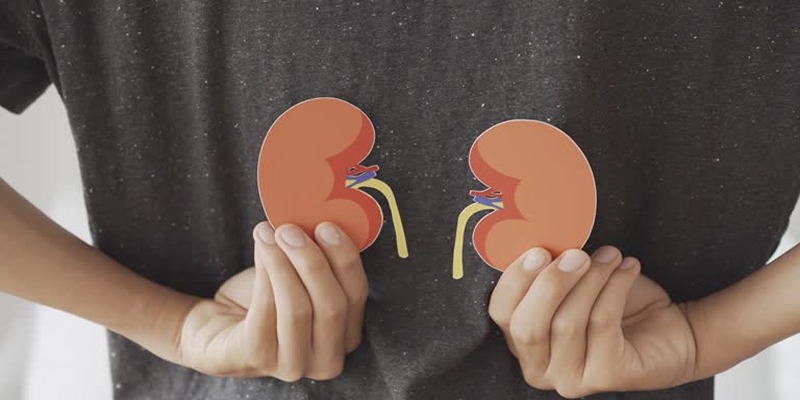Chronic Abdominal Pain in Children: Frequently Identified Causes
Chronic abdominal pain is a common concern among children and can significantly impact their quality of life. It is defined as persistent or recurrent abdominal pain lasting for weeks or months, often posing a diagnostic challenge for healthcare providers. This condition may stem from a variety of causes, ranging from functional gastrointestinal disorders to underlying medical conditions. Identifying the root cause is crucial for effective management and treatment. This overview aims to explore some of the most frequently identified causes of chronic abdominal pain in children and provide insights into their evaluation and care.
Understanding Chronic Abdominal Pain:
Abdominal pain is said to be chronic if it is long standing and intermittent, rather than constantly severe. It can be caused by any reason starting from simple cases of gastroesophageal reflux or a pepetic ulcer to ulcerative colitis or colon cancer, in rare cases.
A variety of factors, including diet, stress, infections, or structural abnormalities in the digestive system, can contribute to this type of pain. Accurate diagnosis often involves a detailed medical history, a comprehensive physical examination, and, when necessary, additional diagnostic tools like imaging or endoscopy.
1. Functional Gastrointestinal Disorders (FGIDs)
Functional gastrointestinal disorders are the leading cause of chronic abdominal pain in children. These conditions include:
- Irritable Bowel Syndrome (IBS): Marked by abdominal pain linked to changes in stool frequency or consistency, often aggravated by stress or dietary factors.
- Functional Dyspepsia: Discomfort or pain in the upper abdomen, typically triggered by eating.
- Abdominal Migraine: Recurring episodes of severe abdominal pain accompanied by nausea and vomiting.
FGIDs are diagnosed based on symptoms, alongside ruling out any underlying organic conditions. Treatment typically focuses on dietary modifications and managing stress to alleviate symptoms.
2. Constipation
Constipation is a common issue in children and a leading cause of chronic abdominal pain. It typically results from infrequent bowel movements, hard stools, or difficulty passing stools. Key symptoms include:
- Cramping or bloating.
- Pain that improves after a bowel movement.
To ease constipation and reduce associated discomfort, encourage a diet rich in fiber, ensure proper hydration, and promote regular physical activity. These simple lifestyle changes can make a significant difference.
3. Food Intolerances and Allergies

Chronic abdominal discomfort is often linked to food intolerances or allergies. Two common culprits include:
- Lactose Intolerance: The inability to digest lactose, a sugar found in dairy products, which can cause bloating, gas, and diarrhea.
- Celiac Disease: An autoimmune response to gluten that damages the small intestine, leading to symptoms like abdominal pain, diarrhea, and fatigue.
Accurate diagnosis typically involves careful dietary tracking, elimination diets, or specialized tests such as blood work or endoscopy to pinpoint the issue.
4. Acid Reflux and Gastroesophageal Reflux Disease (GERD)
Acid reflux happens when stomach acid sneaks back up into the esophagus, often leaving you with that uncomfortable burning sensation in your chest or upper abdomen. But when this becomes a regular issue, it can turn into something more serious—Gastroesophageal Reflux Disease (GERD), a condition defined by:
- Persistent heartburn.
- Difficulty swallowing.
- Regurgitation of food or sour liquid.
To manage these symptoms effectively, consider lifestyle adjustments such as eating smaller, more frequent meals, avoiding foods that trigger reflux, and elevating the head of your bed while sleeping.
5. Inflammatory Bowel Diseases (IBD)
Inflammatory bowel diseases, such as Crohn’s disease and ulcerative colitis, are chronic disorders characterized by persistent inflammation of the digestive tract. Common symptoms include:
- Intense abdominal pain.
- Frequent diarrhea, sometimes accompanied by blood.
- Unintended weight loss and persistent fatigue.
Managing these conditions often requires long-term medical care, and in more severe cases, surgical treatment may be necessary.
6. Parasitic Infections
Parasitic infections, such as giardiasis or pinworms, are a common cause of persistent abdominal discomfort in children. Key symptoms include:
- Recurring abdominal pain.
- Itching around the rectal area (commonly seen with pinworms).
- Diarrhea or nausea.
7. Psychological Factors
Emotional stress, anxiety, and depression can often manifest as physical symptoms, including chronic abdominal pain. This phenomenon, known as somatic pain, is particularly common in children facing:
- Academic or social pressures.
- Family conflicts.
- Other emotional challenges.
8. Gallbladder or Liver Problems
Although rare in children, issues such as gallstones or hepatitis can cause persistent abdominal pain, particularly in the upper right quadrant. Gallstones form when bile hardens into stones, potentially blocking bile ducts and causing sharp, intense pain. Hepatitis, an inflammation of the liver, can arise from infections, autoimmune disorders, or toxin exposure. Key signs to watch for include:
- Pain radiating to the back or shoulder, often worsening after eating fatty foods.
- Jaundice (yellowing of the skin and eyes), signaling liver dysfunction.
- Nausea, vomiting, or loss of appetite, which may indicate digestive distress.
- Fatigue or general malaise, commonly linked to liver issues.
9. Abdominal Wall Pain
Abdominal wall pain originates from the structures outside of the internal abdominal organs, such as muscles, nerves, or skin. Often mistaken for deeper abdominal issues, this pain is localized and tends to worsen with specific movements or pressure. Common causes include:
- Muscle strain from heavy lifting, intense exercise, or physical overexertion, leading to soreness or small muscle tears.
- Nerve compression caused by poor posture, trauma, or conditions like hernias, which can trigger sharp or tingling sensations.
- Skin irritation or infections, such as rashes, burns, or shingles, accompanied by visible symptoms like redness, blisters, or inflammation.
- Surgical scars or prior trauma to the abdominal area, which may result in chronic discomfort.
10. Rare but Serious Causes

Although rare, certain serious conditions can result in chronic abdominal pain in children. These include:
- Chronic Appendicitis: Ongoing pain in the lower right abdomen.
- Kidney Stones: Sharp, intense pain that may radiate to the lower back.
- Tumors or Growths: Often accompanied by additional symptoms such as weight loss or fatigue.
Timely medical evaluation is essential to identify these conditions and initiate effective treatment.
Managing Chronic Abdominal Pain:
Effective management strategies depend on the condition causing the pain but often include:
- Dietary Adjustments: Avoiding trigger foods, increasing fiber intake, and staying well-hydrated.
- Lifestyle Modifications: Promoting regular exercise and stress management techniques.
- Psychological Support: Addressing emotional or mental health factors through therapy or counseling.
Conclusion:
Chronic abdominal pain in children can be challenging—affecting both the child and their caregivers. Understanding the potential causes, seeking timely medical attention, and adopting targeted management strategies can significantly enhance the child’s quality of life. Always consult a healthcare professional for an accurate diagnosis and tailored treatment plan.












